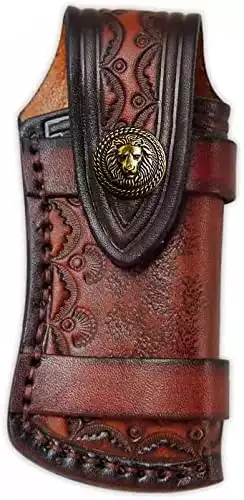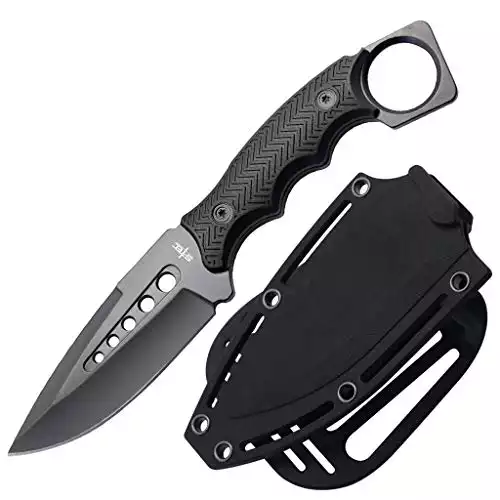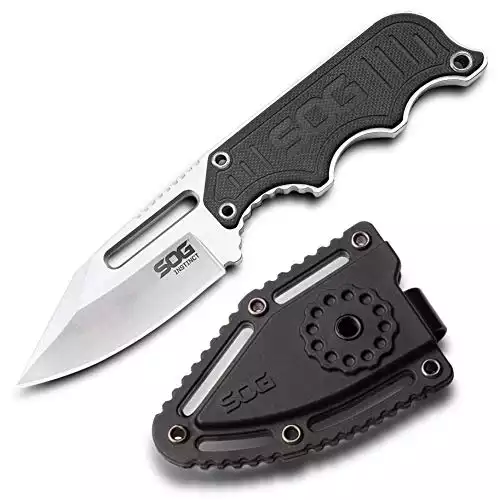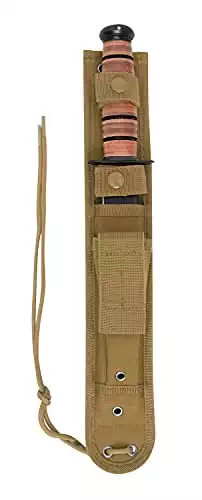[ad_1]
How you carry your knife depends on your intent. Wearing a utility knife in the bush looks very different from wearing an everyday carry (EDC) or even a concealed carry for self-defense.
It also depends on the type of survival knife. For example, you can wear a folding blade in many places where you can’t wear a fixed blade.
Regardless of your purpose, the goal is a balance between ease of carry and ease of access. The smaller the knife, the easier it is to both carry and conceal. On the other hand, larger knives are easier to access and in most cases, are more efficient.
In as much as possible, holster your knife in a way that provides the best of both worlds. Just be sure to review your local and state laws before sporting any of these carries.
Knife carry positions come down to a few options:
- Around or near the waist
- Around or near other parts of the body
- On various types of rigging
- In your gear
1. Drop-Leg Dangle
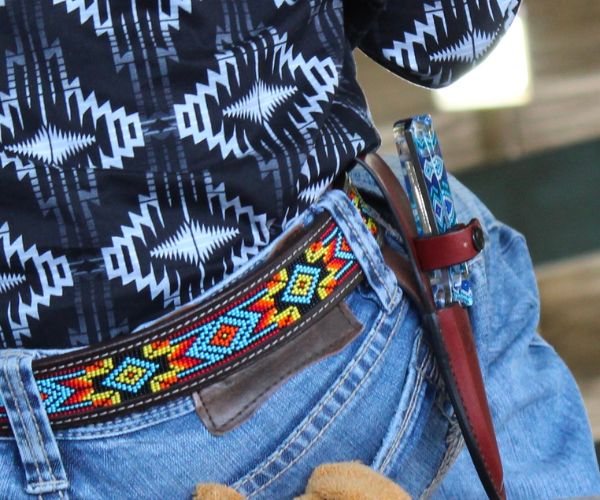
There are several ways to carry a knife around the waist: horizontally, vertically, or some degree in between. You’ll also find variations of those methods, such as choosing between a vertical knife worn tip up or tip down. You can secure your folding and fixed-blade knife around the waist by your appendix, on your back, or on your sides.
We’ll start with the drop-leg dangle, common among bush crafters and those who wield a bushcraft knife for everyday use on the homestead. As the name implies, your belt runs through the sheath above the handle and butt of a fixed-blade knife, allowing it to freely dangle alongside your leg.
The advantage is that it allows you to move freely without interference from the knife. It sits low enough that the butt doesn’t infringe upon your rib cage when trying to sit down.
It also allows your knife to hang below any survival belt or rucksack, so it doesn’t impede access to any of your other gear.
Many don’t like a flopping knife on the side of their leg. Dangles are also prone to get tangled up in the bush. To remedy this, some modify the bottom of the sheath and affix it to the leg, making it less mobile.
2. Outside Waistband (OWB) Tip Down
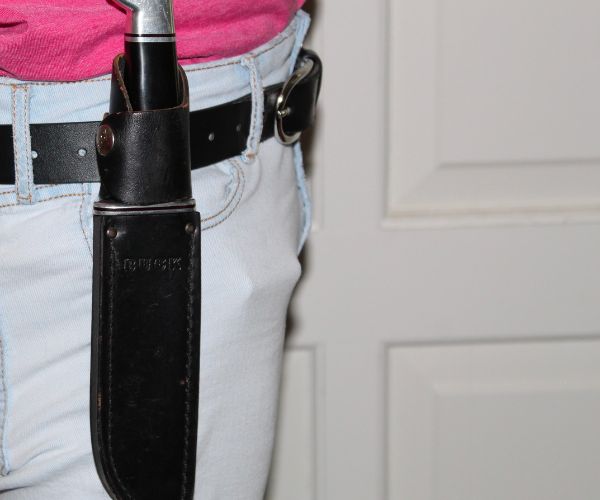
The OWB tip down secures a fixed-blade knife to your belt or waistline slightly higher than the leg dangle. Whereas the leg dangle places the butt of the knife below your waistline, the standard OWB secures the knife higher up, where the butt of the knife is around your abdomen.
You can carry a folding blade OWB by simply securing it to the waist in any position that’s comfortable.
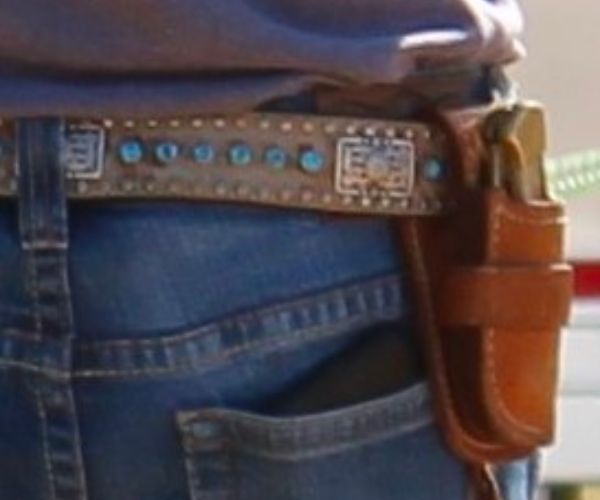
Attach it to your belt using a sheath or directly to the waistline of your pants by using its clip. In most cases, folding blades are almost always stored tip down because it’s the safer option, and most clip attachments are designed that way.
3. Outside Waistband (OWB) Tip Up
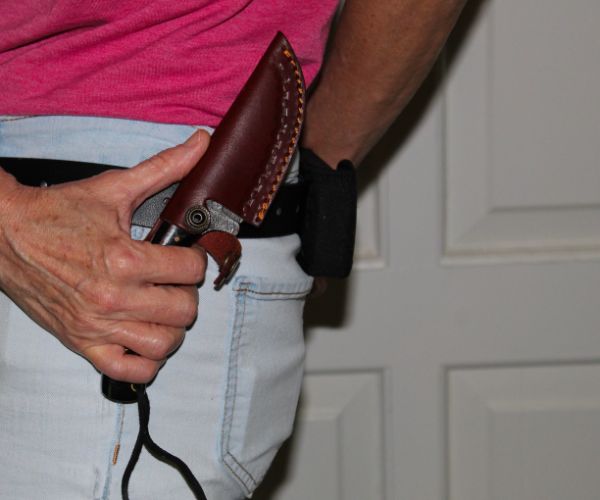
The OWB tip up method of wearing a knife is pretty much identical to the tip down, except for the direction of the blade. Some claim it is a more natural reflex to unsheath the knife by pulling straight down rather than pulling up.
There’s no distinct advantage one way or the other. For most, it’s just a matter of preference, along with the physical features of the knife and sheath.
Although, personally, I’m much more comfortable with a knife butt in my abdomen rather than the tip of a fixed blade.
4. Scout Style
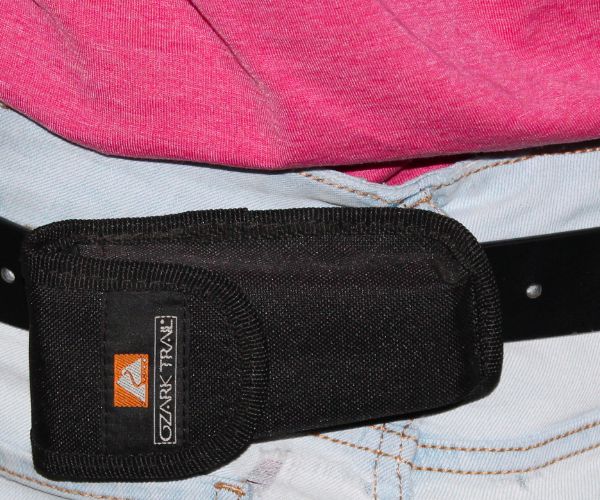
Scout style is when the knife rests horizontally on or just below the belt in the small of your back. It allows you to move freely and sit comfortably without your knife getting hung up or having to be adjusted.
While this carry is quite popular, many survivalists frown upon carrying a sharp blade in the small of your back for safety reasons. To accommodate this concern, some carry horizontally in the 3 o’clock or 9 o’clock positions instead. Still, others carry appendix style at the 11 or 1 o’clock position.
While you can purchase a scout-style sheath, you can also convert a standard drop leg or OWB sheath using a little paracord. Likewise, many pocket-knife sheaths are scout-style in their design and run horizontally along the belt instead of vertically.
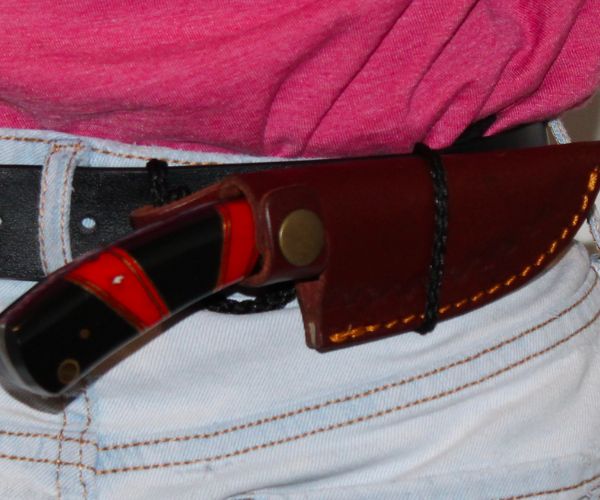
5. Cant Style
A cant-style carry is a slightly modified version of the scout, with the blade rotated 45 degrees up or down. Many knife experts believe that angled blades deploy easier and are more comfortable.
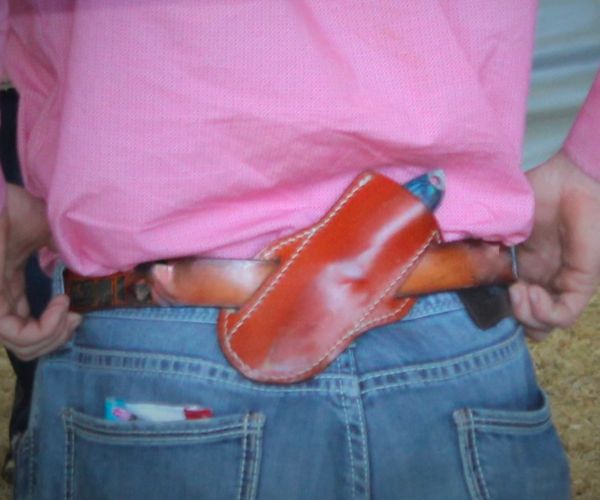
The disadvantage is you limit yourself to one hand. If your dominant hand becomes disabled, there’s a good chance you won’t be able to access your knife at all.
Sheath designs for both scout and cant styles vary. Some are specially made for cant wear, while others offer an adjustable rotating clip that allows you to set the rotation to your personal preference.
6. Static-Line Pocket Carry
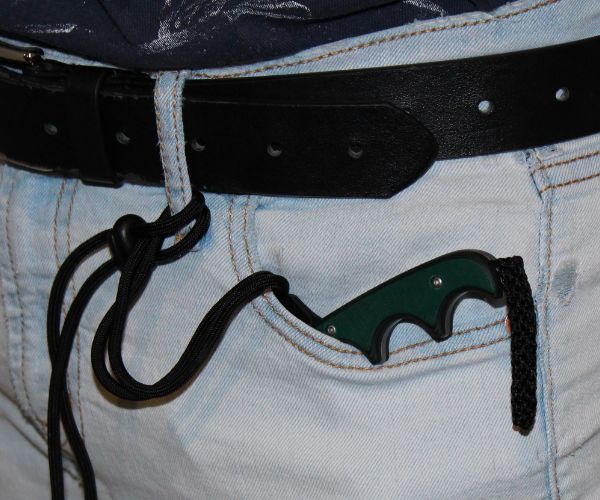
A rather small blade is required to pocket-carry a fixed-blade knife. You’ll want to attach a static line from the sheath to a belt loop to ensure you don’t lose the sheath on the draw.
Hard-shell sheaths work best for pocket carry since they’re hard, rigid, and usually have a locking mechanism. You don’t want to worry about an open blade in your pocket.
Pocket carries are typically enjoyed by hunters and fishermen, as well as those who like to conceal-carry.
7. Samurai Carry
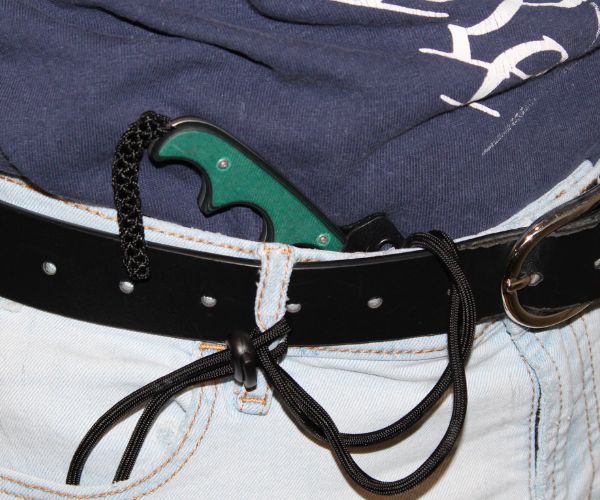
The samurai carry, also known as an inside waistband (IWB) carry or deep-carry static line, is almost identical to the pocket carry.
The only difference is that instead of tucking the sheath inside the front pocket, it’s tucked inside the front waistband somewhere between the 9 o’clock and the 3 o’clock positions.
Tuck the sheath inside the waistband with the butt of the knife resting just above the waistline for easy access. Like the pocket carry, there’s traditionally a lanyard attached from the sheath to the belt loop to keep it secured to your person.
8. Pocket Clip Carry
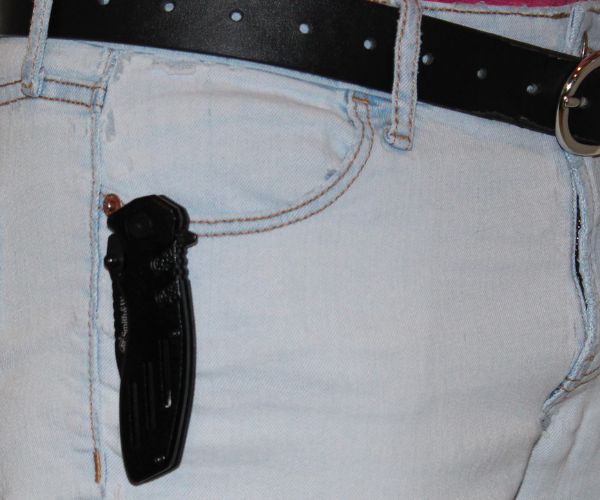
If your sheath has a clip instead of loops, try attaching it to your front pocket rather than your belt.
Some sheaths with discrete carry clips are specially designed to attach to the pocket. You can wear them either inside or outside your pocket, depending on their size.
Pocket-style carry works best with folding blades without sheaths. They can easily be secured by their clips and can be worn on front or back pockets.
9. Neck Carry
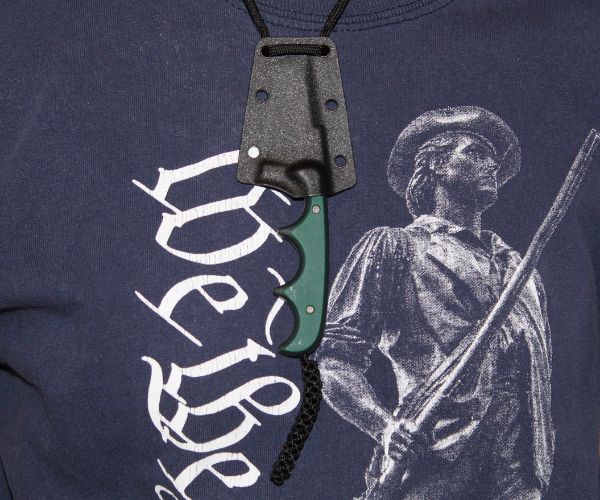
Some people prefer to conceal their knives around less conspicuous parts of the body than the waist. They are still easily accessible for utility purposes but can also be concealed for self-defense.
Neck knives are great for camping and hiking just because they’re always handy. I like wearing just a plain old pocket knife around my neck when camping. It works great if I’m in shorts with no pockets or under a pack on the trail. They’re small, compact, lightweight, and easily accessible.
Some prefer wearing a neck knife as a tactical self-defense weapon, but this is illegal in many states.
It’s a good idea to wear your neck knife on a breakaway chain to avoid any potential choking hazards. You may even want to invest in a torso strap to prevent any flopping around if you’re engaged in excessive physical activities.
10. Bra Carry
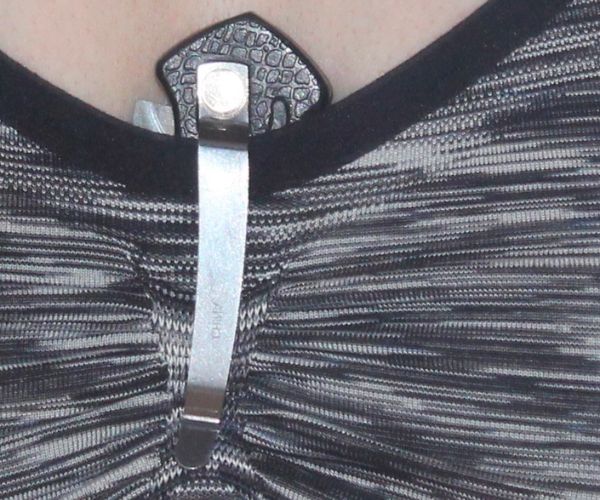
Some women conceal-carry small fixed blades or folding blades in their bras. There are specially designed bras with built-in holsters that can carry small items like mace, pepper spray, or even small survival blades.
There are also specially designed sheaths with clips that can be attached to the bra strap. Still, others simply clip their folding blades directly onto the bra itself.
11. Boot Carry
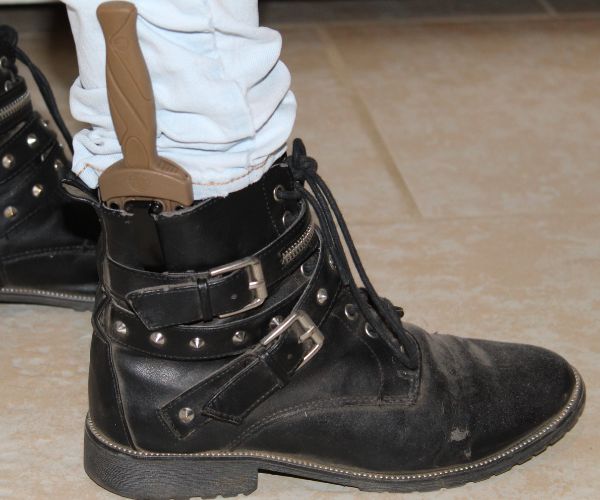
Boot knives can be either fixed or folded blades. Most of the time, they’re for concealment, but you’ll find the occasional bush crafter that likes to holster their large bowie knife in the boot. By tucking the pant leg inside the boot, the knife rests comfortably between the leg and the shaft of the boot.
Boot knives are typically worn on the inside collar of the boot in a position most comfortable to you. However, some bush crafters prefer to clip their knives to the outside of the boot instead.
Read: How to carry a boot knife
12. Hip, Thigh, and Ankle Holsters
While you can buy a store-bought harness or holster, there are plenty of DIY versions to carry your knife on your hip, thigh, or ankle.
These holsters usually have two separate bands or buckles—one for the top of the sheath and one for the bottom. These adjustable bands secure the knife around the hip, leg, or ankle. Some stand-alone and some attach to a utility or survival belt.
13. Baldric Rig
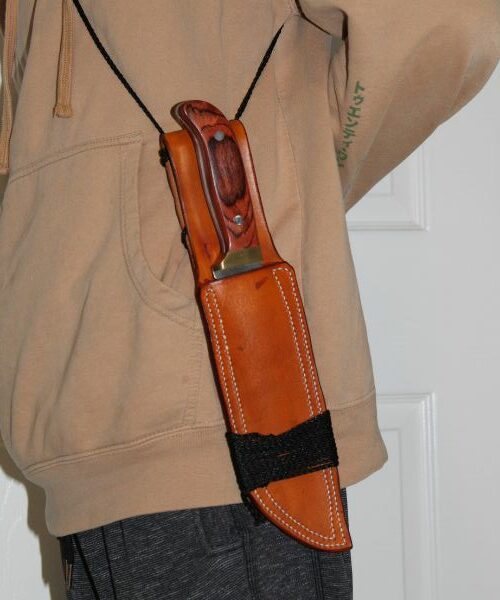
Instead of wearing fixed-blade knives around the waist or other parts of the body, many opt to wear various riggings and holsters around the body’s core. These are particularly useful for either super-large fixed blades, like mountain-man knives, or more discreet concealed carry knives.
The baldric rig is an ideal way to carry large utilitarian fixed-blades, such as bowie knives or large mountain-man knives that might be cumbersome around the leg or hip area.
It’s also a preferred winter option for many bush crafters because it allows them to wear their knives over bulky coats and jackets.
The baldric rig essentially slings your sheath so you can wear it over your shoulder like a rifle or purse. You can buy a premade version or do it yourself.
14. Mercenary Rig
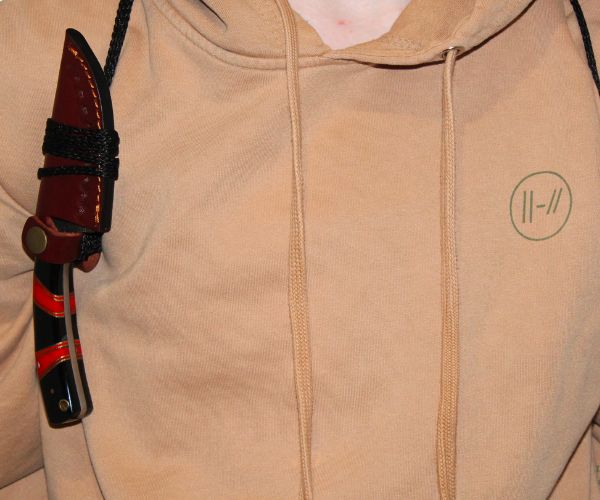
Whether you’re camping, hunting, or just looking for general concealment, mercenary rigs place the butt of the knife in the vicinity of your upper chest area. The figure-eight rigging fits around both shoulders and hugs the knife close to the chest.
Simply slip on a coat or jacket for concealment. You can buy a premade shoulder holster or make your own.
15. MOLLE/PALS Webbing Vests or Packs
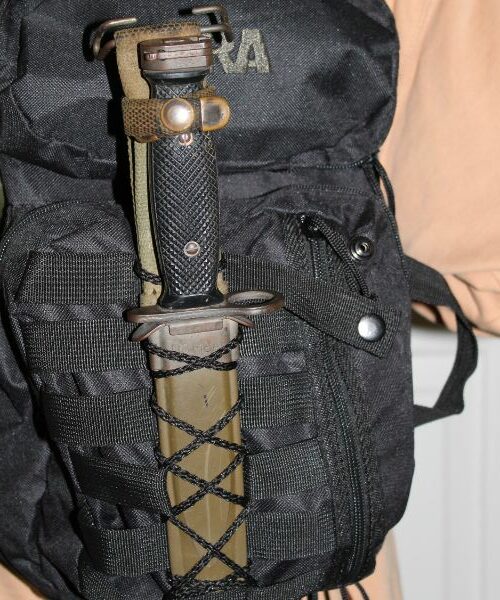
If you’re engaged in any activity requiring excessive body gear, sometimes drawing your knife directly from your gear is more convenient, instead of having to work around your gear to gain access.
Some survivalists like to attach a blade directly to their bug-out bag or tactical vest MOLLE style. This works best with a Kydex sheath because they have the predrilled rivet holes, but with a little ingenuity, you can still manage with other sheath types.
You can attach your sheath right side up, upside down, or even sideways depending on your personal preference. In most cases, you’ll just lace over your sheath like a pair of shoes using the PALS webbing on your pack or vest.
However, there are commercial MOLLE sheaths available. The drawback is that without your bag or vest, you’re left without your knife.
16. Tactical Shoulder Harness, Backpack Strap, or Suspender Harness
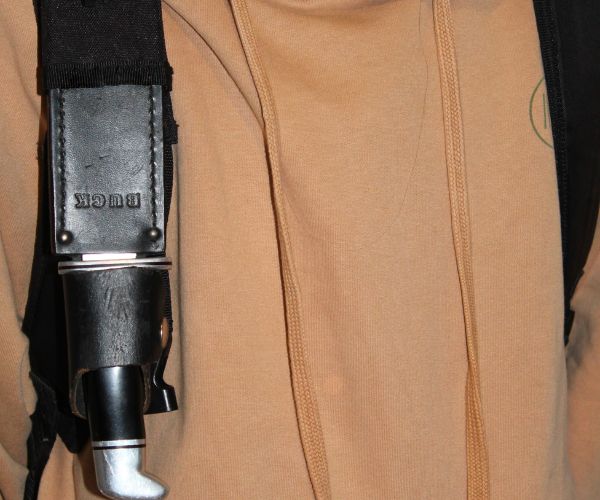
Whether it’s for a tactical setup, a utility option on the trail, or a gentlemanly concealed carry, many enjoy the convenience of having a fixed blade attached to various shoulder straps. This is usually done in a tip-up fashion with a cross-draw in mind.
While store-bought options are available, you can find plenty of DIY ideas on the internet that can work with just about any kind of sheath.
17. Purse Straps
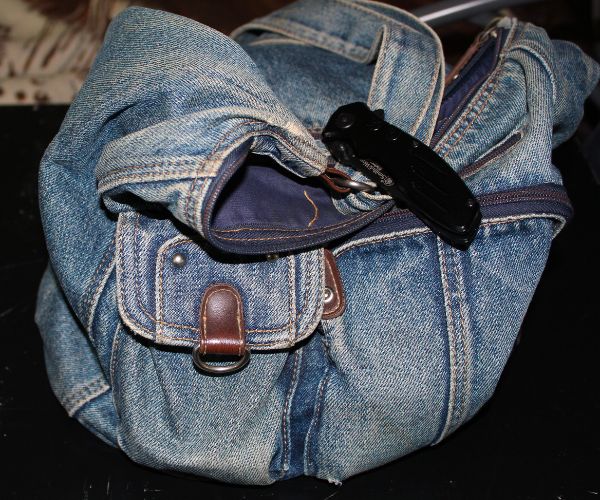
For the ladies, small to medium fixed and folding blades can clip right onto your purse strap. If your purse has removable straps, you can run the strap through your sheath loops just like you would with a belt.
18. Key Chains, Money Clips, and Wallets
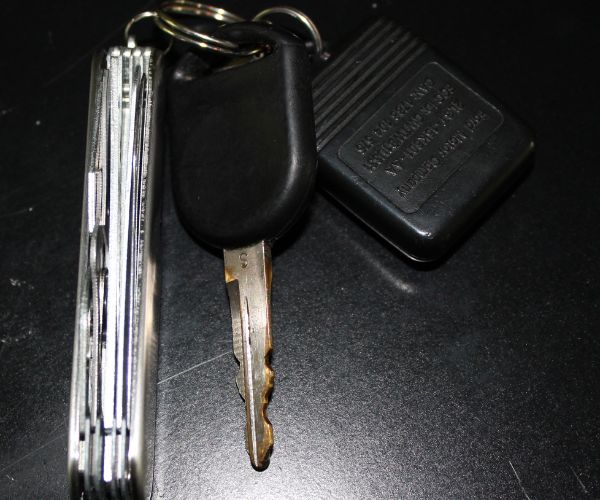
You can carry smaller knives on key chains. Although often not very strong or sturdy, with the right training you can easily fend off an attacker in an emergency.
Money clips, credit cards, and wallet knives are also all great options for concealed carry.
Regardless of which carry you use, remember the goal is to balance convenience and accessibility with purpose and practicality.
[ad_2]
Source link
